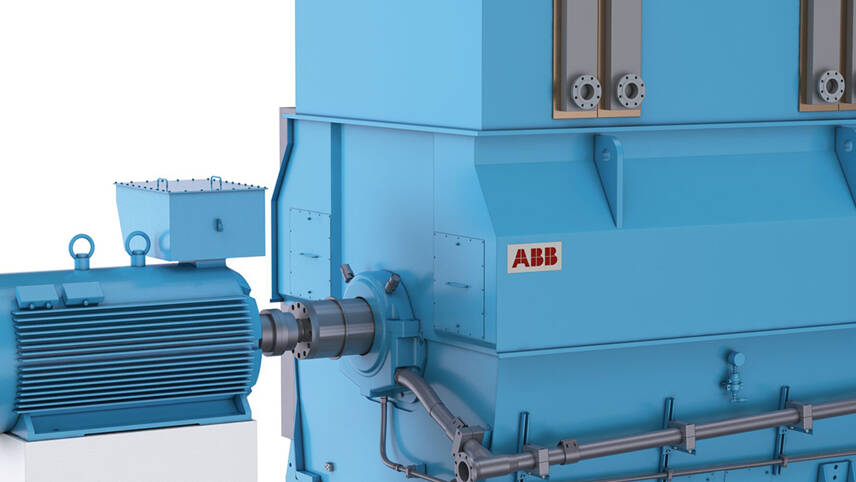This is the Sponsored paywall logged out

The transition to renewable energy can create stability issues for the world’s power grids. Innovative synchronous condenser technology can restore the balance.
The global transition to decarbonized power generation means that renewable resources like wind and solar are fast replacing large, centralized fossil-fueled plant. That is good news in terms of reducing carbon emissions. However, it also brings new challenges in maintaining grid stability.
A traditional power plant contains large spinning components that store kinetic energy. This provides useful system inertia to resist sudden changes, such as when a generator trips offline. It is rather like the way that a car’s shock absorbers help smooth out the effect of a sudden bump in the road to keep it safely on course. Power grids rely on their inertia to keep them stable.
Restoring the missing inertia
Wind turbines and solar panels are not able to contribute inertia to the grid. Therefore, as large power plant is decommissioned in ever increasing numbers the amount of inertia available is also diminished. Fortunately, innovative technology is available to tackle this challenge in the form of synchronous condensers (SCs). These large rotating devices put the missing inertia back into the grid.
SCs are proving to be a very cost-effective and reliable way to maintain power quality and provide the fault current protection essential to strengthen a weak grid. This is key to increasing renewables within the energy mix while maintaining grid reliability.
Helping the Faroe Islands adopt 100% green electricity
SCs will help the isolated Faroe Islands in the North Atlantic achieve an ambitious goal to become the world’s greenest group of islands. By 2030, SEV, the islands’ power utility, will be using 100% green electricity from hydropower, solar and wind and potentially tidal streams. As well as being an important climate change initiative, this will bring economic benefits as the Faroes will no longer rely on expensive fossil-fuel imports.
However, switching off the existing diesel-fueled generating plant could impact the stability of SEV’s grid. This is because it provides the vital “spinning inertia” that keeps the system in balance.
The first SC installation is at the 8 megavolt-ampere (MVA) Porkeri Wind Farm on Suðuroy, which is electrically isolated from the rest of the archipelago. It is undergoing trial operations and will be fully up and running in the first half of 2022. Together with battery energy storage, the SC could enable 100% of the island’s demand to be met with wind energy at times with good wind conditions.
“We want to harness our natural sustainable energy resources so we can stop using oil,” says Magnus Rasmussen, Faroe Islands Minister of Environment, Industry and Trade. “This will enable us to future proof our energy supply both onshore and offshore.”
SCs are not only for islands
SCs have a much broader range of applications than islands. Currently, Statkraft, Europe’s largest renewable energy producer, is deploying two high-inertia SCs for the Lister Drive Greener Grid park in Liverpool, England. They will play a key role in stabilizing the local grid to handle more wind and solar power. This will help the UK’s National Grid meet its target of operating a zero-carbon electricity system by 2025.
SCs will grow in importance
The world’s electricity networks are undergoing fundamental change as the grid penetration of renewables increases while fossil fuel power plants are decommissioned. This is creating a growing need for networks to be supported by decentralized solutions that ensure grid stability and resilience. Synchronous condensers can play a vital role in strengthening weak networks, especially in remote areas.
In addition to the latest deployments in Liverpool and the Faroe Islands, SCs have already helped reinforce power networks in Australia, Canada and elsewhere in the UK. The expectation is that network operators worldwide will adopt SCs in ever-increasing numbers as the urgency to decarbonize electricity production continues to gather momentum.
To find out more please visit: https://new.abb.com/motors-generators/synchronous-condensers





Please login or Register to leave a comment.